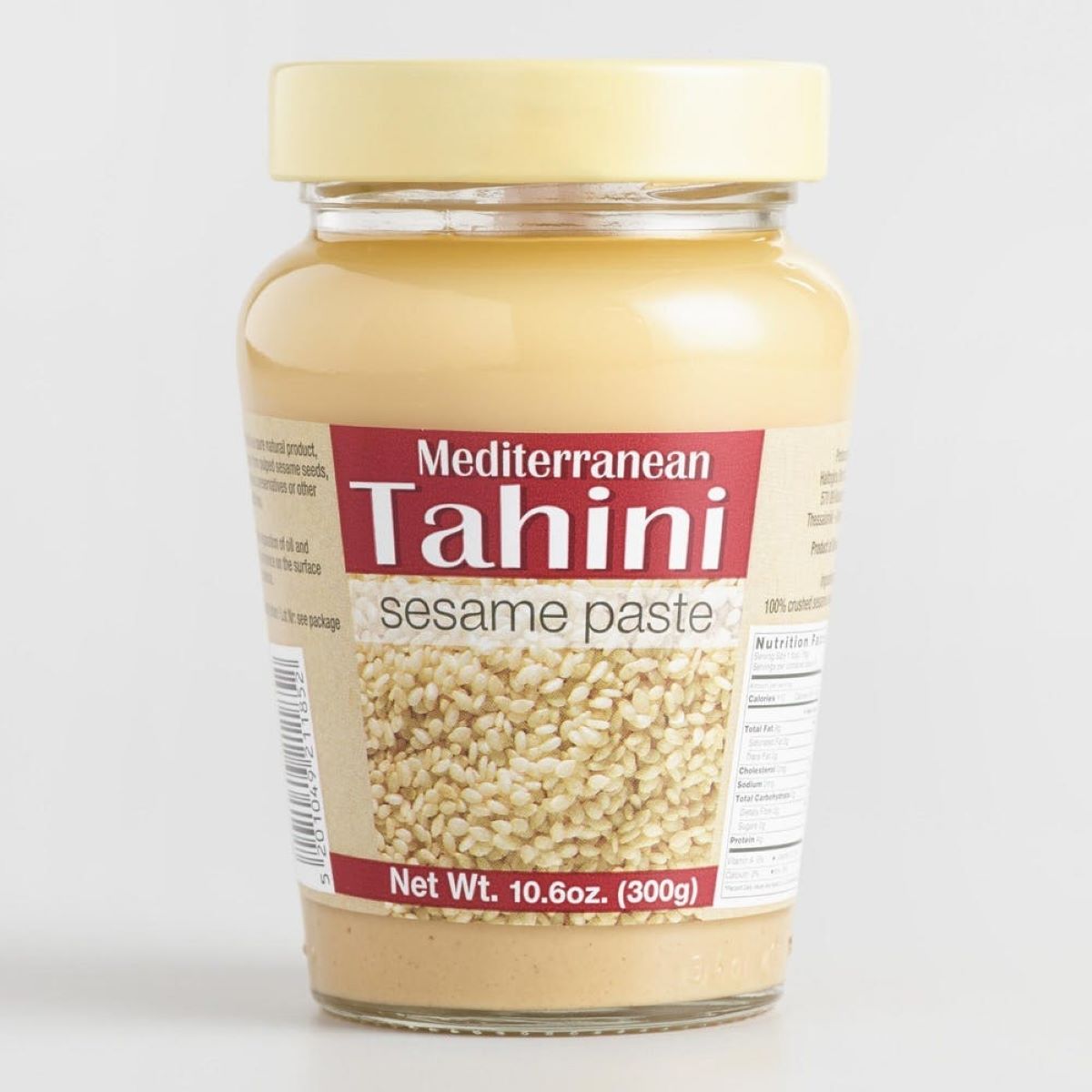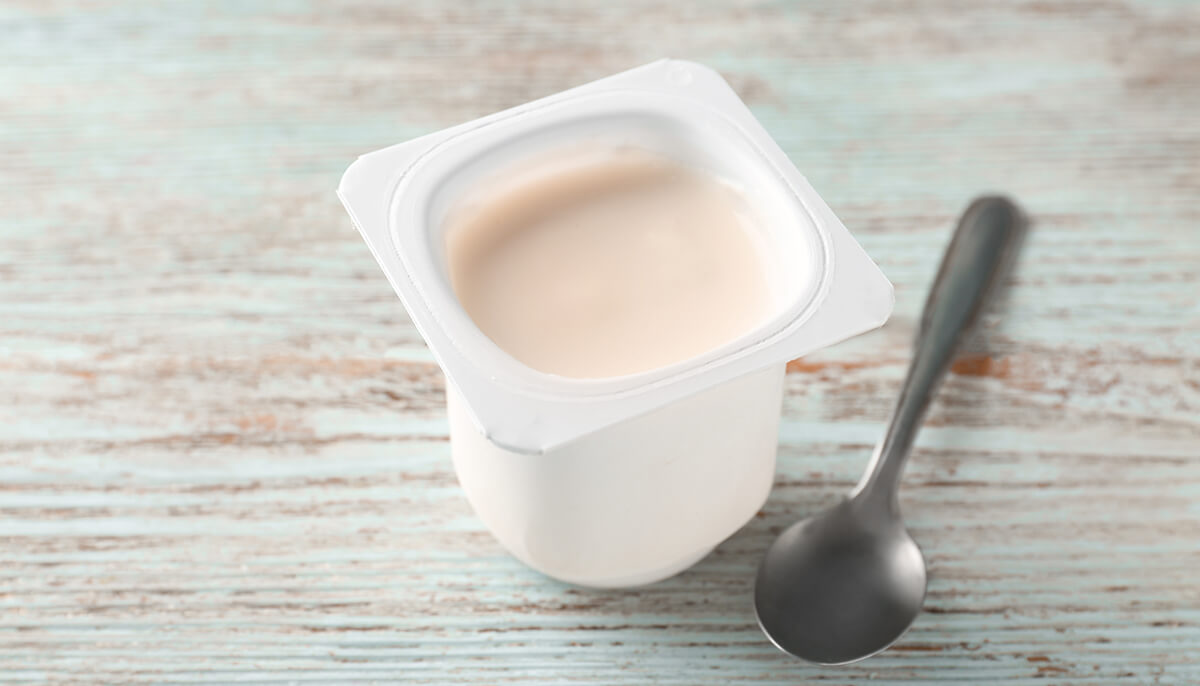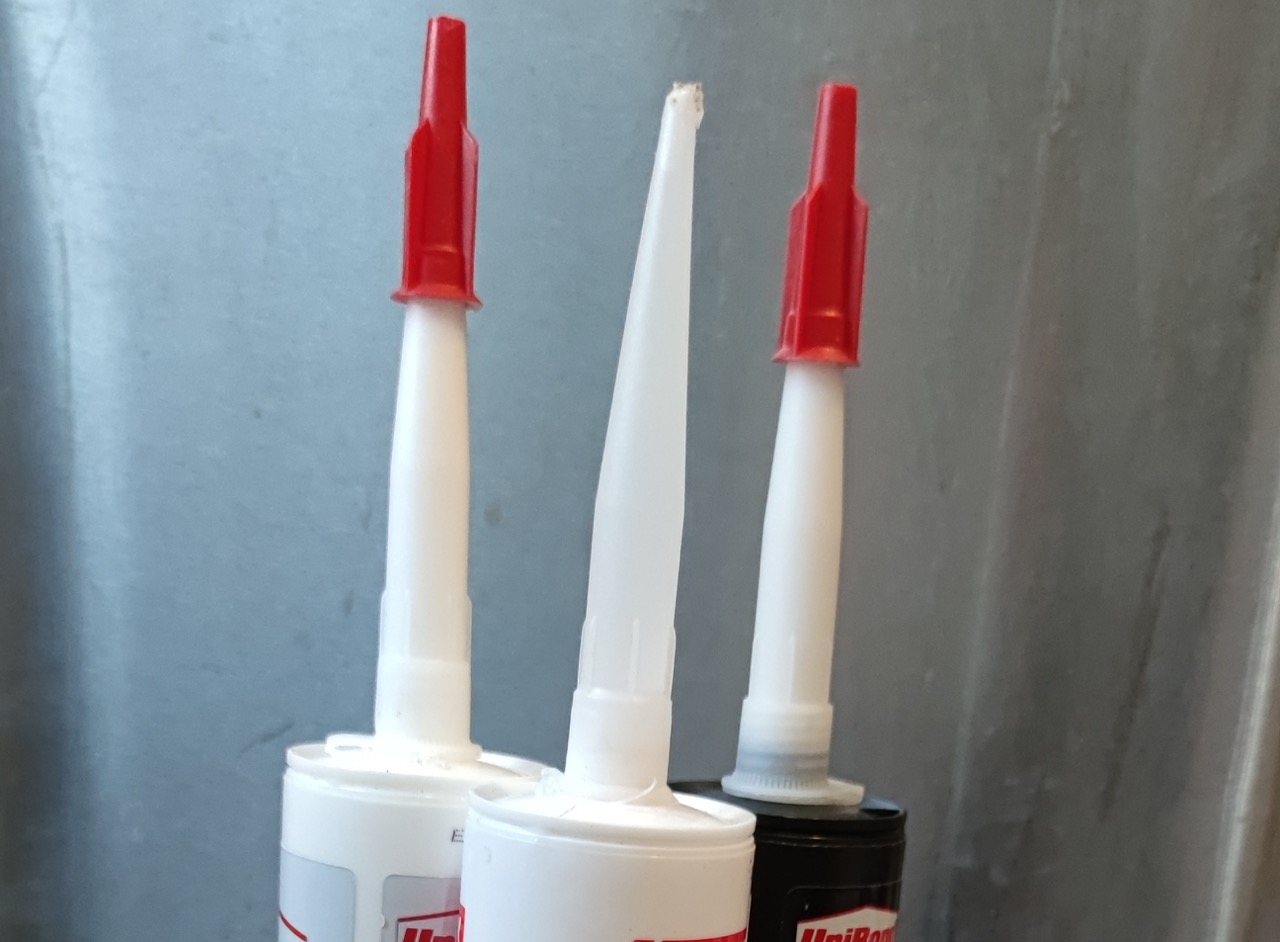

Articles
How To Store Opened Tahini
Modified: December 7, 2023
Learn the best tips for storing opened tahini in this helpful article. Discover how to keep your tahini fresh and flavorful for longer.
(Many of the links in this article redirect to a specific reviewed product. Your purchase of these products through affiliate links helps to generate commission for Storables.com, at no extra cost. Learn more)
Introduction
Tahini, a thick paste made from ground sesame seeds, is a versatile ingredient in many cuisines. Its nutty flavor and creamy texture make it a staple in dishes like hummus, salad dressings, and dips. But what happens when you open a jar of tahini and can’t finish it all in one go? Properly storing opened tahini is crucial to maintain its freshness, flavor, and nutritional value.
When tahini is exposed to air, it can oxidize and become rancid over time. This not only affects the taste but also reduces its nutritional benefits. Improper storage can lead to spoilage, resulting in a waste of both money and food. To ensure that your opened tahini remains fresh and safe to consume, it’s important to follow proper storage guidelines.
In this article, we will explore the importance of proper storage for opened tahini and discuss key factors to consider when storing it. We will also delve into the suitable containers and the debate between refrigeration and room temperature storage. Additionally, we will provide tips for prolonging the shelf life of opened tahini and how to identify signs of spoilage.
So, if you’re a fan of tahini and want to learn how to store it properly, read on to discover the best practices for preserving the quality of your opened tahini.
Key Takeaways:
- Proper storage of opened tahini is crucial to maintain its freshness, flavor, and nutritional value. Transfer it to an airtight container, consider refrigeration or room temperature storage, and be mindful of signs of spoilage.
- By following proper storage techniques, you can ensure that your opened tahini remains fresh, safe, and enjoyable for an extended period. Choose the right container, store it away from heat and light, and regularly inspect for spoilage indicators.
Read more: How To Store Tahini After Opening
Why is Proper Storage Important for Opened Tahini?
Proper storage is essential for opened tahini to maintain its flavor, texture, and nutritional value over time. Here are a few reasons why:
- Preserving Freshness: When tahini is exposed to air, it can undergo oxidation, which leads to a loss in flavor and freshness. The oils in tahini can become rancid, resulting in an unpleasant taste and odor. By storing opened tahini properly, you can help slow down the oxidation process and ensure that it remains fresh for an extended period.
- Preventing Contamination: Like any other food product, opened tahini can be prone to contamination if not stored properly. Microorganisms such as bacteria and mold thrive in warm and moist conditions, and they can quickly multiply in an improperly stored jar of tahini. This can lead to foodborne illnesses and spoil the quality of the tahini. By storing it correctly, you can minimize the risk of contamination and maintain the safety of the product.
- Maintaining Nutritional Value: Tahini is rich in essential nutrients like protein, healthy fats, and vitamins. However, improper storage can cause a loss of these valuable nutrients. Exposure to light, heat, and air can degrade the nutritional content of tahini. Storing it properly helps to preserve its nutritional value, ensuring that you reap the maximum benefits when consuming it.
- Preventing Waste: Proper storage of opened tahini can help prevent unnecessary waste. If tahini spoils due to improper storage, you’ll end up throwing away a jar that could have otherwise been enjoyed. By following the correct storage guidelines, you can prolong the shelf life of opened tahini, minimizing waste and saving money.
Overall, proper storage practices for opened tahini are crucial to maintain its freshness, prevent contamination, preserve its nutritional value, and reduce waste. By taking the time to store your tahini correctly, you can ensure that each spoonful retains its delicious flavor and benefits your health.
Factors to Consider When Storing Opened Tahini
When it comes to storing opened tahini, there are several important factors to consider. By keeping these factors in mind, you can extend the shelf life of your tahini and maintain its quality. Here are the key factors to consider:
- Air Exposure: Tahini is sensitive to air exposure, which can cause it to oxidize and become rancid. To minimize air exposure, make sure to tightly seal the container after each use. Opt for a container with an airtight seal to keep your tahini fresh for longer.
- Temperature: Temperature plays a significant role in the storage of tahini. It is generally recommended to store opened tahini in a cool, dark place. Excessive heat can accelerate the breakdown of the oils in the tahini, leading to spoilage. Avoid storing it near heat sources such as stovetops or direct sunlight.
- Humidity: Tahini is prone to absorbing moisture, which can result in a change in texture and the growth of mold. Humidity can also contribute to the rancidity of the oils in tahini. Choose a storage location with low humidity to prevent moisture absorption and maintain the quality of your tahini.
- Light Exposure: Exposure to light can degrade the quality of tahini. UV light can cause the oils in tahini to break down faster, leading to a loss of flavor and nutritional value. Store your opened tahini in a dark place or choose an opaque container to protect it from light exposure.
- Cross-Contamination: To prevent cross-contamination and the potential for spoilage, it’s important to use clean utensils when scooping tahini from the jar. Avoid double-dipping or using dirty knives or spoons, as this can introduce bacteria into the container.
- Storage Container: Choosing the right storage container for your opened tahini is crucial. Opt for a container made of glass or plastic that has an airtight seal. Mason jars or BPA-free plastic containers are popular choices. Make sure that the container is clean and dry before transferring the tahini into it.
By considering these factors and implementing proper storage techniques, you can ensure that your opened tahini stays fresh and maintains its quality for an extended period. Taking the time to store your tahini correctly will enhance your culinary creations and provide you with delicious, nutty tahini every time you use it.
Proper Container for Storing Opened Tahini
Choosing the right container for storing opened tahini is essential to maintain its freshness and quality. Here are some factors to consider when selecting a container:
- Airtight Seal: Look for a container with a secure and airtight seal. This helps to prevent air from entering and oxidizing the tahini, keeping it fresh for a longer period.
- Material: Opt for a container made of glass or food-grade plastic. Glass containers are an excellent choice as they are non-reactive, do not absorb odors, and are easy to clean. If using plastic, ensure that it is BPA-free to prevent any chemical leaching.
- Size: Choose a container size that is suitable for the amount of tahini you typically use. A smaller container ensures less air exposure when the jar is opened, leading to better preservation of the tahini.
- Transparency: Although it’s important to protect tahini from light exposure, having a transparent or translucent container allows you to monitor the tahini’s condition without having to open the jar. If using a see-through container, store it in a dark place to minimize light exposure.
- Easy to Clean: Ensure that the container is easy to clean and maintain. It should be dishwasher-safe or have a wide opening that allows for easy handwashing to prevent any residue buildup.
- Multiple Compartments: If you often purchase tahini in larger quantities, consider using a container with compartments. This allows you to divide the tahini into smaller portions, storing an unopened portion for longer while having a smaller jar opened for frequent use.
Remember to clean your storage container thoroughly before transferring the opened tahini into it. This helps to prevent any cross-contamination and maintain the quality of the tahini. Additionally, label the container with the date of opening to keep track of its shelf life.
By selecting a proper container that provides an airtight seal and protects the tahini from light and moisture, you can prolong its shelf life and ensure that it remains fresh and flavorful until the last scoop.
Refrigeration vs. Room Temperature Storage
When it comes to storing opened tahini, the debate between refrigeration and room temperature storage is a common one. Let’s explore the pros and cons of each:
Read more: How To Store Tahini
Refrigeration:
Refrigeration is a popular choice for storing opened tahini, as it offers several benefits:
- Extended Shelf Life: Refrigerating opened tahini can significantly extend its shelf life. The cold temperature slows down the oxidation process, helping to maintain the freshness and flavor of the tahini for a longer period.
- Protection from Rancidity: Cold temperatures help to inhibit the growth of microorganisms, reducing the risk of spoilage and preventing the tahini from becoming rancid. Refrigeration is especially beneficial if you live in a warm or humid climate.
- Retains Nutritional Value: Storing tahini in the refrigerator helps to preserve its nutritional value. It minimizes the breakdown of important nutrients, such as healthy fats and vitamins.
- Thickening: Refrigerating tahini can cause it to thicken and develop a firmer consistency. This can be preferred by those who enjoy a thicker texture in their tahini-based recipes.
Room Temperature Storage:
While refrigeration has its advantages, some people prefer to store opened tahini at room temperature. Here are a few reasons why:
- Easier to Stir: Tahini tends to thicken when refrigerated, making it harder to stir and incorporate into recipes. Storing it at room temperature keeps the tahini more fluid, making it easier to use and mix.
- Convenient Accessibility: Storing tahini at room temperature allows for immediate availability and easy access. You can scoop out the desired amount without having to wait for it to come to room temperature or deal with a thicker consistency.
- Potential Flavor Preservation: Some argue that refrigeration can slightly alter the flavor of tahini, affecting its taste profile. Storing it at room temperature may help preserve the original flavor more effectively.
The choice between refrigeration and room temperature storage ultimately depends on personal preference and specific circumstances. If you live in a warm climate or won’t consume the tahini quickly, refrigeration is recommended to maintain its freshness. However, if you prefer a smoother texture and find it more convenient to store at room temperature, it is still safe to do so as long as proper storage guidelines are followed.
Regardless of the chosen storage method, ensure that the tahini is tightly sealed in an airtight container to minimize air exposure and potential contamination. This will help maintain the quality and safety of your opened tahini.
Store opened tahini in an airtight container in the refrigerator to prevent it from going rancid. Make sure to stir it well before using as it may separate.
Tips for Prolonging the Shelf Life of Opened Tahini
Proper storage techniques are crucial for extending the shelf life of opened tahini and maintaining its quality. Here are some valuable tips to help you make the most out of your tahini:
- Transfer to an Airtight Container: Once opened, transfer the tahini to an airtight container. This helps to minimize air exposure, preventing oxidation and maintaining the freshness of the tahini.
- Store in a Cool, Dark Place: Choose a storage location that is cool and away from direct sunlight. Heat and light can accelerate the breakdown of the oils in tahini, leading to rancidity and spoilage.
- Avoid Moisture: Keep tahini away from moisture, as it can promote the growth of mold and affect the texture and quality of the product. Ensure that the storage container is dry before transferring the tahini.
- Use Clean Utensils: When scooping tahini from the container, always use clean utensils to minimize the risk of contamination. Avoid double-dipping to prevent the introduction of bacteria into the jar.
- Label the Container: To keep track of the shelf life, label the container with the date of opening. Tahini typically has a shelf life of around 6 to 12 months, but the exact duration may vary depending on factors such as storage conditions and the quality of the tahini.
- Avoid Cross-Contamination: Do not allow other foods or liquids to come into contact with opened tahini, as it can lead to cross-contamination and spoilage. Store it separately from other foods in your pantry or refrigerator.
- Check for Spoilage: Regularly inspect the tahini for any signs of spoilage, such as a rancid odor, off-color, or mold growth. If you notice any of these signs, discard the tahini immediately.
- Use Freezer for Long-Term Storage: If you have a large amount of opened tahini and won’t be able to consume it within a few months, consider storing it in the freezer. Freezing can significantly extend the shelf life, but it may affect the texture slightly. Thaw the frozen tahini in the refrigerator before use.
By following these tips, you can prolong the shelf life of your opened tahini and ensure that it remains fresh and safe to consume. Remember, although tahini has a relatively long shelf life, it is always important to use your judgment and assess the quality of the tahini before consuming it.
Signs of Spoilage in Opened Tahini
As with any food product, it’s important to be able to recognize signs of spoilage in opened tahini to ensure the safety and quality of the product. Here are some common indicators that your tahini may have spoiled:
- Rancid Odor: One of the primary indicators of spoilage in tahini is a rancid or off odor. If your tahini has developed an unpleasant smell, similar to paint or old oil, it is likely spoiled and should not be consumed.
- Unusual Texture: Spoiled tahini may exhibit changes in texture. It might become unusually dry, clumpy, or grainy. If the texture is noticeably different from its original smooth and creamy consistency, it’s best to discard it.
- Change in Color: Tahini typically has a light beige or slightly darker color. If you notice any discoloration, such as dark spots, mold growth, or a significant change in color, it is a clear indication of spoilage.
- Mold Growth: Mold growth is a sure sign of spoilage. If you see any fuzzy or greenish patches on the surface of your tahini, it is no longer safe to consume. Mold can produce harmful toxins, and consuming spoiled tahini can lead to foodborne illnesses.
- Off-Taste: Taste is usually the final indicator of spoilage. If your tahini tastes bitter, sour, or has an unusual flavor that is vastly different from its normal nutty taste, it is best to discard it.
It’s important to note that tahini can have a naturally bitter undertone due to the sesame seeds used in its production. However, if the bitterness becomes overpowering or unpleasant, it could be an indication of spoilage.
It is crucial to trust your senses when it comes to identifying spoilage in tahini. If you notice any of the above signs, it is recommended to discard the tahini to prevent the risk of foodborne illnesses and maintain your health.
Remember to always practice proper storage techniques to minimize the chances of spoilage, and regularly inspect your tahini for any signs of deterioration. By being mindful of these indicators, you can enjoy tahini that is fresh, safe, and delicious.
Read more: How To Store Opened Champagne
Conclusion
Proper storage of opened tahini is essential to maintain its freshness, flavor, and nutritional value. By following the appropriate storage guidelines, you can prolong its shelf life and reduce waste. Here are the key takeaways to keep in mind:
Start by transferring the opened tahini to an airtight container to minimize air exposure, which can lead to oxidation and rancidity. Choose a container made of glass or food-grade plastic, ensuring it is clean and dry before transferring the tahini.
Consider the storage location for your opened tahini. Refrigeration offers extended shelf life and protection from rancidity, while room temperature storage provides smoother texture and convenient accessibility. Choose the option that best suits your preferences and operational needs.
Keep your tahini away from excessive heat, light, and moisture, as these can compromise its quality. Store it in a cool, dark place or in the refrigerator, taking care to protect it from cross-contamination.
Label the container with the date of opening to keep track of its shelf life, and regularly inspect the tahini for signs of spoilage such as rancid odor, unusual texture, color changes, mold growth, or off-taste. When in doubt, it is best to discard the tahini to ensure your safety.
By implementing these tips, you can ensure that your opened tahini remains fresh, safe, and enjoyable for an extended period. Proper storage allows you to make the most out of this versatile ingredient and enhance the flavors in your favorite recipes.
Remember, while tahini has a relatively long shelf life, it’s always crucial to utilize your senses and exercise caution when consuming any food. When in doubt, it is best to err on the side of caution and discard any tahini that displays signs of spoilage.
So, whether you’re a fan of creamy hummus, flavorful salad dressings, or delicious dips, proper storage techniques will help you maintain the quality of your opened tahini and add that nutty richness to your culinary creations.
Frequently Asked Questions about How To Store Opened Tahini
Was this page helpful?
At Storables.com, we guarantee accurate and reliable information. Our content, validated by Expert Board Contributors, is crafted following stringent Editorial Policies. We're committed to providing you with well-researched, expert-backed insights for all your informational needs.














0 thoughts on “How To Store Opened Tahini”